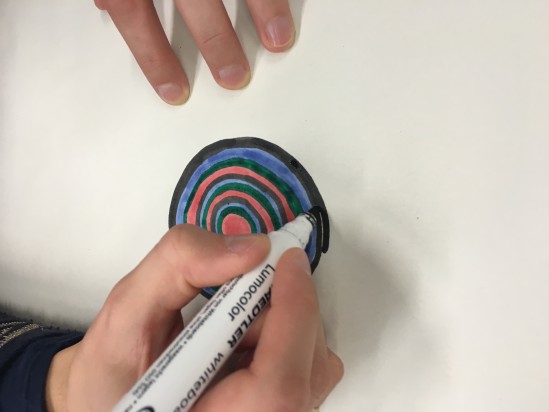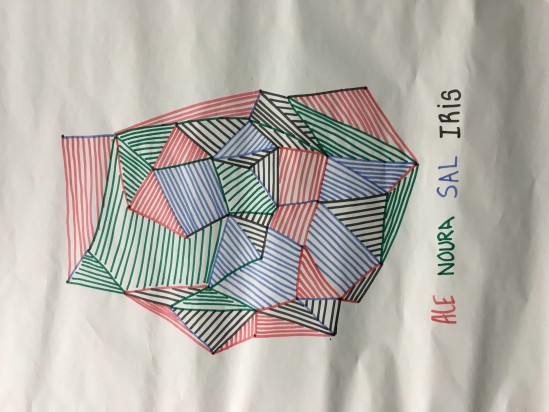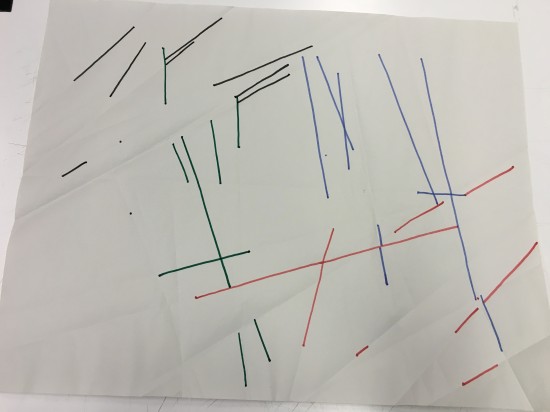

As you can see from the examples above, it is not the product that is the purpose, but the process. It can be better explained by the authors of the design method with the following:
Process
The process is the product.
The most important aspects of a process are time, relationship and change.
The process produces formations rather than forms.
We search for unexpected but correlative, emergent patterns.
Even though a process has the appearance of objectivity, we realize the fact that it stems from subjective intentions.
Logic
Logic is our tool.
Logic is our method for accentuating the ungraspable.
A clear and logical setting emphasizes that which does not seem to fit within it.
We use logic to design the conditions through which the process can take place.
Design conditions using intelligible rules.
Avoid arbitrary randomness.
Difference should have a reason.
Use rules as constraints.
Constraints sharpen the perspective on the process and stimulate play within the limitations.
Input
The input is our material.
Input engages logic and activates and influences the process.
Input should come from our external and complex environment: nature, society and its human interactions.
- Luna Maurer, Edo Paulus, Jonathan Puckey, Roel Wouters
The Conditional Design method challenges the conventional rules of authorship by changing the rules of design in a way that the author is no longer one person and their creativity, but the moment of a split-second decision made by several people in conjunction. It is a fascinating exercise that demonstrates how by its own intrinsic nature, human interaction can turn out with unpredictable and beautiful results.
In a class workshop, we split into groups in order to create our own designs with Conditional Design. In groups of four, in which I was together with Iris, Saleema and Noura, we each got our own coloured pen and developed the following prompts.
1. The Perfect Circle
Each person has a coloured pen: red, blue, green and black. Players take turns clockwise. The rules indicate that play begins with one person drawing a circle in the centre of the page. From then, in each person's turn, they must draw a perfect circle around the previous circle, taking 60 seconds each to complete it. The game finishes when you reach the end of the page. (Disclaimer: we finished the game earlier than that because of class time constrictions.)


2. Hatching
Each person has a coloured pen: red, blue, green and black. Players take turns clockwise. The rules indicate that play begins with each player placing a dot arbitrarily on the page, but without being more than 10cm away from each other. In each turn, each player draws a line connecting two dots. The angle of the line depends on the colour of each player's pen:
• 0 to 45 degrees for the black lines
• 45 to 90 for blue lines
• 90 to 135 for red lines
• 135 to 180 for green lines
If possible, your line should connect to an existing line. You must draw the shortest possible line from the starting point. When an area is enclosed, the player must hatch it by drawing parallel lines in the area, parallel to the line that the area was enclosed with. These areas must never contain other dots or lines unconnected.

3. The Beach
Each person has a coloured pen: red, blue, green and black. Players take turns clockwise. The rules indicate that play begins as each player finds the space with the most white space in the page and places a dot there. Each turn continues in this manner with players trying to do it as quickly as possible within five minutes.
This exercise was particularly fun and interesting since it allowed us as a group to develop a strategy in order to do it as quickly as possible. We each gave ourselves a number from 1 to 4 and when we placed our dot, said that number. This allowed us to move very rapidly as everybody knew which player was placing the dot and when their turn came, they were prepared for it.
Unfortunately, I did not get an image for this exercise, so I will continue.
4. FluxFold
Each person has a coloured pen: red, blue, green and black. Players take turns clockwise. The rules indicate that play begins with each player lifting the corner of the page closest to them and bringing it to any point in the paper, so that the other corner is lifted as well, then pressing the paper down to make a fold, and finally, placing a dot at any point in that fold. From that point, players took turns folding a corner to the end of the line drawn by the person before them, then making a fold and drawing a line from the end of the last line drawn and following along a fold until that fold crosses another fold. Play continues in this manner until time is up.

The idea of Conditional Design was originally created by Luna Maurer, Jonathan Puckey, Roel Wouters and Edo Paulus, with the intention of developing a method of design where the product was the process, rather than the finished outcome. Conditional Design involves a simple set of rules that must be followed by all participants as they take turns building on a design that is unpredictable and dynamic (Conditional Design Workbook, https://workbook.conditionaldesign.org).
In the words of the creators: "Our work focuses on processes rather than products: things that adapt to their environment, emphasize change and show difference."
This can be further demonstrated with examples of the kind of approach to design that this method offers. The following are gifs I have made by compiling screenshots of the process of conditional design workshop examples: